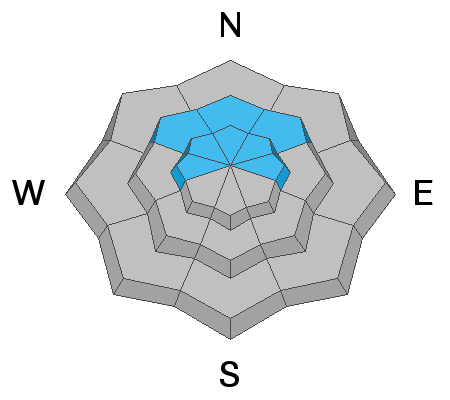Beaver Mountain is opening their lifts tomorrow....
A Christmas winter storm will impact the region, and the national weather service has issued a
Winter Storm Warning, with heavy snow likely in the mountains around Logan tomorrow through Christmas Morning. Two or three feet of snow could accumulate in favored locations in the Bear River Range. The much needed snow and drifting from sustained southwest winds will cause
rapidly rising avalanche danger, and the storm is likely to create
very dangerous avalanche conditions on many slopes in the backcountry. Light snow is expected to start falling this afternoon, west-southwest winds will blow 15 to 23 mph on the ridges, and it will be mostly cloudy with 8500' high temperatures around 32° F. A few inches could accumulate tonight, but heavy snowfall is expected to really start up tomorrow.
The new snow will accumulate on weak sugary surface snow and/or feathery surface hoar or frost that formed in the last few days under high pressure weather conditions, and is widespread across the Logan Zone. In many areas the heavy new snow will not bond well to the weak surface snow, and avalanches of storm snow are likely. Once buried, the weak surface snow could become a tricky persistent weak layer. This type of weak snow can create avalanches on slopes less steep than you might expect. The storm will also overload a persistent weak layer near the ground on upper elevation north facing facing slopes, creating potential for very large and destructive avalanches.
Nice surface hoar feathers on the snow surface at low elevations in the backcountry. This can become a future persistent weak layer if it is buried intact.
A pretty good sized natural avalanche of wind drifted snow was spotted yesterday off Providence Peak in upper Providence Canyon. Not really a surprise, as this very steep avalanche path frequently avalanches, especially with drifting from sustained southwest winds like we've seem in the past few days.
A couple skier triggered avalanches occurred Saturday in high north facing terrain. The largest was likely remotely triggered as it was observed near an uptrack near the Tony Grove-Blind Hollow Saddle at about 8800' on a north facing slope. The 2 to 3 foot deep avalanches failed on a persistent weak layer consisting of sugary faceted snow capping a crust near the ground.











